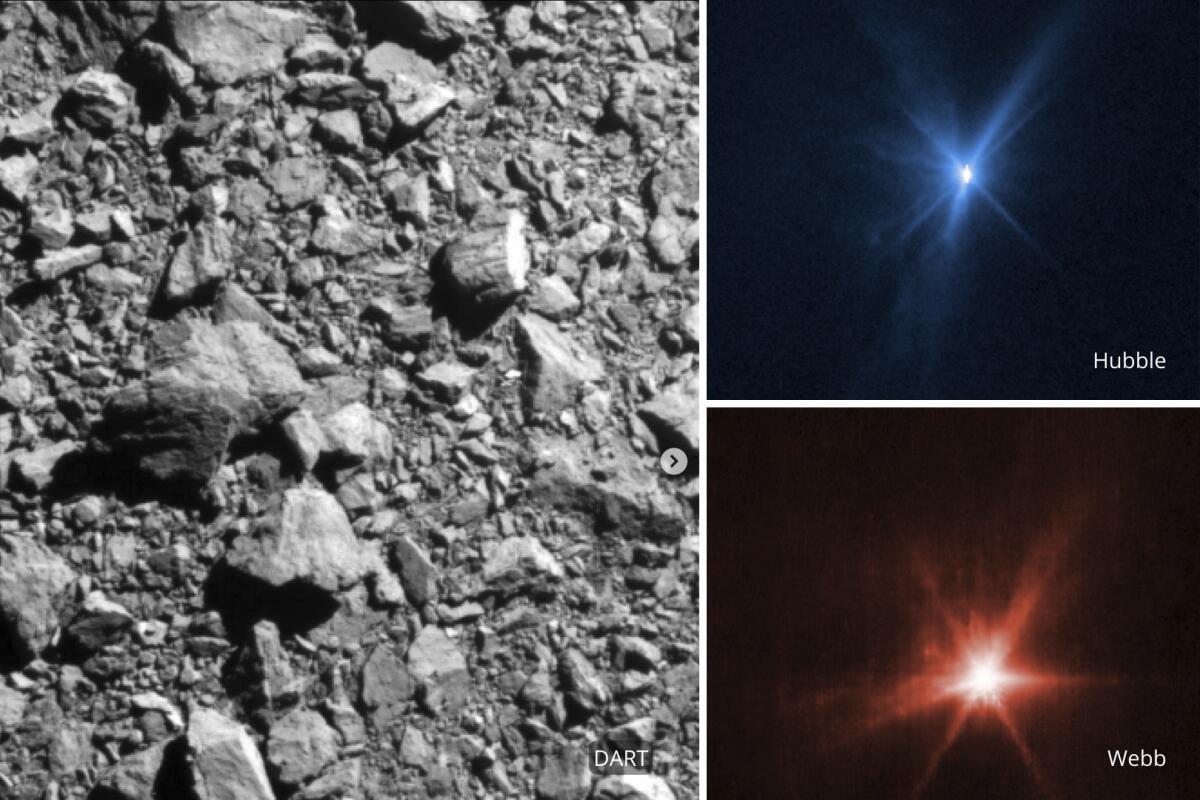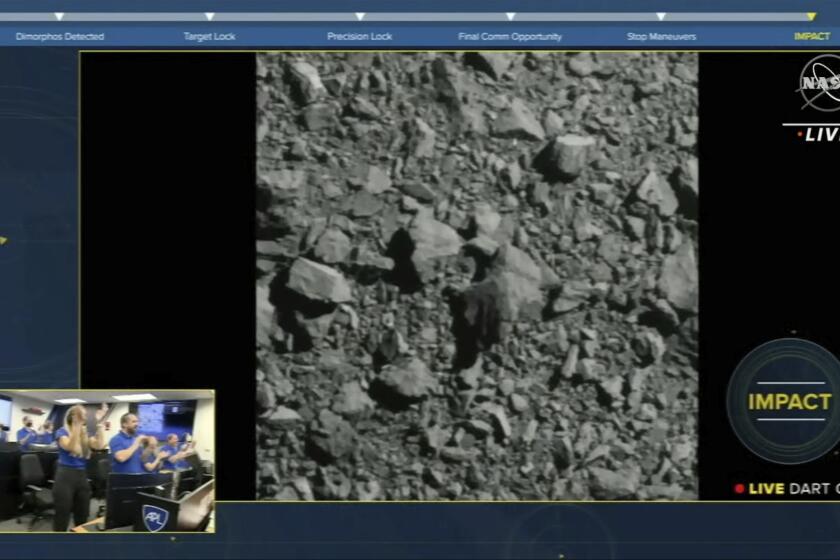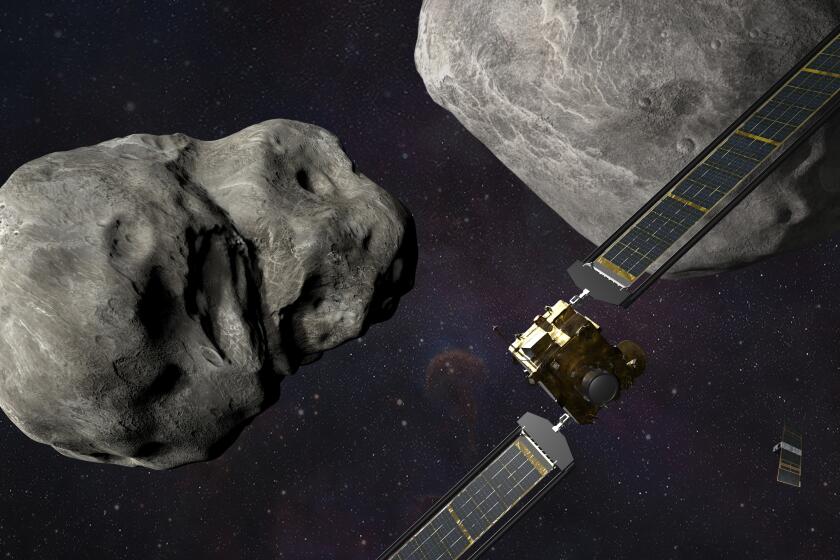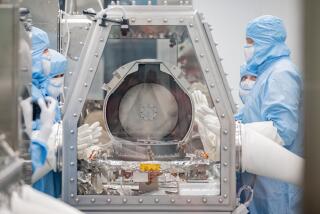Space telescopes capture NASA’s asteroid slam with striking clarity

- Share via
CAPE CANAVERAL, Fla. — The world now has stunning new photos of this week’s asteroid strike, the first planetary defense test of its kind.
NASA released pictures Thursday of the dramatic event, taken by the Hubble and Webb space telescopes.
A few hours later, SpaceX and NASA announced that they’re studying the feasibility of sending a private mission to Hubble — potentially led by a billionaire space tourist — to raise the aging telescope’s orbit and extend its life.
Telescopes on all seven continents watched Monday as NASA’s DART spacecraft slammed into the harmless space rock 7 million miles from Earth in hopes of altering its orbit.
A NASA spacecraft rammed an asteroid at blistering speed Monday in an unprecedented dress rehearsal for the day a killer rock menaces Earth.
Scientists won’t know the precise change in the asteroid’s orbit until November, but hope the experiment’s results instill confidence in using the technique if a killer asteroid heads toward Earth one day.
“This is an unprecedented view of an unprecedented event,” Johns Hopkins University planetary astronomer and mission leader Andy Rivkin said in a statement.
The photos will help scientists learn more about the little asteroid Dimorphos, which took the punch and ended up with a sizable crater.
The impact sent streams of rock and dirt hurtling into space, appearing in the
latest photos as bright rays emanating from the asteroid.
The brightness of this double asteroid system — the 525-foot Dimorphos is actually a moonlet circling around a bigger asteroid — tripled in the Hubble images after the impact, according to NASA.
Hubble and Webb will keep observing Dimorphos and its larger companion, Didymos, for several weeks.
The $325-million DART mission was launched last year. The spacecraft was built and managed by Johns Hopkins’ Applied Physics Laboratory in Laurel, Md.
A NASA spacecraft is about to clobber a small, harmless asteroid millions of miles away.
As for Hubble, NASA officials emphasized Thursday that the observatory, launched 32 years ago, is in good shape and might have another decade of life left.
Hubble’s orbit is constantly shrinking, moving closer to Earth, but the telescope could have even more years ahead if it were boosted from its current 335 miles above Earth to 375 miles or more, scientists say. The six-month technical feasibility study by NASA and SpaceX also will consider whether any of Hubble’s parts could be replaced, presumably by a crew.
Jared Isaacman, a Pennsylvania tech entrepreneur who paid for his own SpaceX flight last year, said a Hubble mission, if approved, would fit nicely into his plan to take more spaceflights. But he stopped short of saying whether he was volunteering for the mission.
“We’re working on crazy ideas all the time,” Thomas Zurbuchen, NASA’s science mission chief, told reporters. “Frankly, that’s what we’re supposed to do.”








